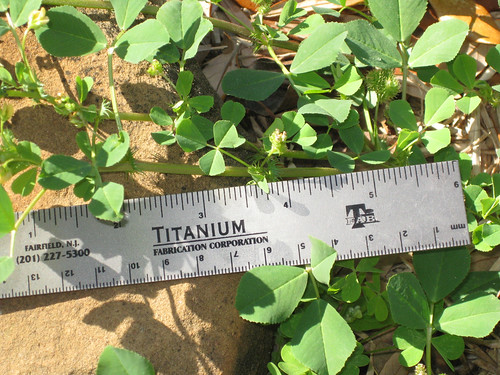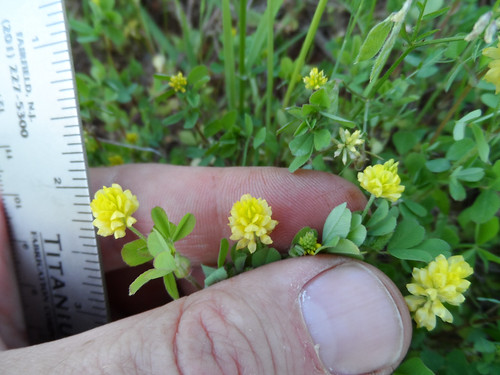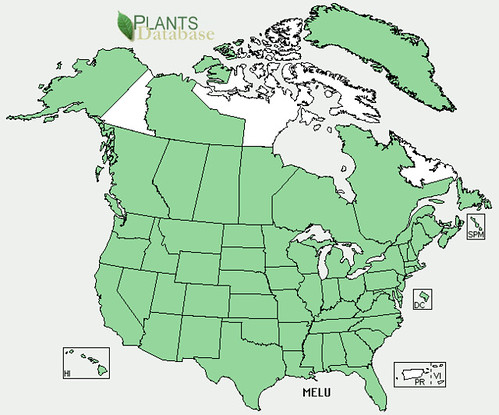Abundance: plentiful
What: seeds
How: raw or roasted, ground into flour
Where: sunny fields, lawns, and neglected areas
When: late winter through summer
Nutritional Value: starch

Close-ups of Burr Clover flowers.


Burr Clover seed pods.

Texas distribution, attributed to U. S. Department of Agriculture. The marked counties are guidelines only. Plants may appear in other counties, especially if used in landscaping.

This map is very incomplete.
North American distribution, attributed to U. S. Department of Agriculture.

Burr Clover is often mistaken for regular clover but these leaves are coarse, rough-edged and grow off prostate runners all branching out from a central taproot. The edible seeds grow one per seedpod and can be eaten raw or roasted then ground into flour once they turn black.
Being mostly starch, it should be possible to use Burr Clover seeds to produce alcohol. The starch must be broken down into simple sugars for the yeast. The easiest way to do this to combine the crushed seeds with the amylase enzymes found in saliva…in other words, the traditional “spit beer” made by many primitive cultures where a starchy material is chewed and then spit into a large pot to ferment for several days to produce a weak alcoholic drink. Luckily, high concentrations of the necessary enzyme are also found the sprouts of barley and other grains, which can be bought from brewer supply stores.
Like most clovers, Burr Clover forms a symbiotic partnership with rhizobium bacteria which allows it to turn atmospheric nitrogen gas into a form usable by plants. This makes it a beneficial plant to let grow in your garden as it fertilizes nearby plants with this nitrogen.
Buy my book! Outdoor Adventure Guides Foraging covers 70 of North America's tastiest and easy to find wild edibles shown with the same big pictures as here on the Foraging Texas website.

